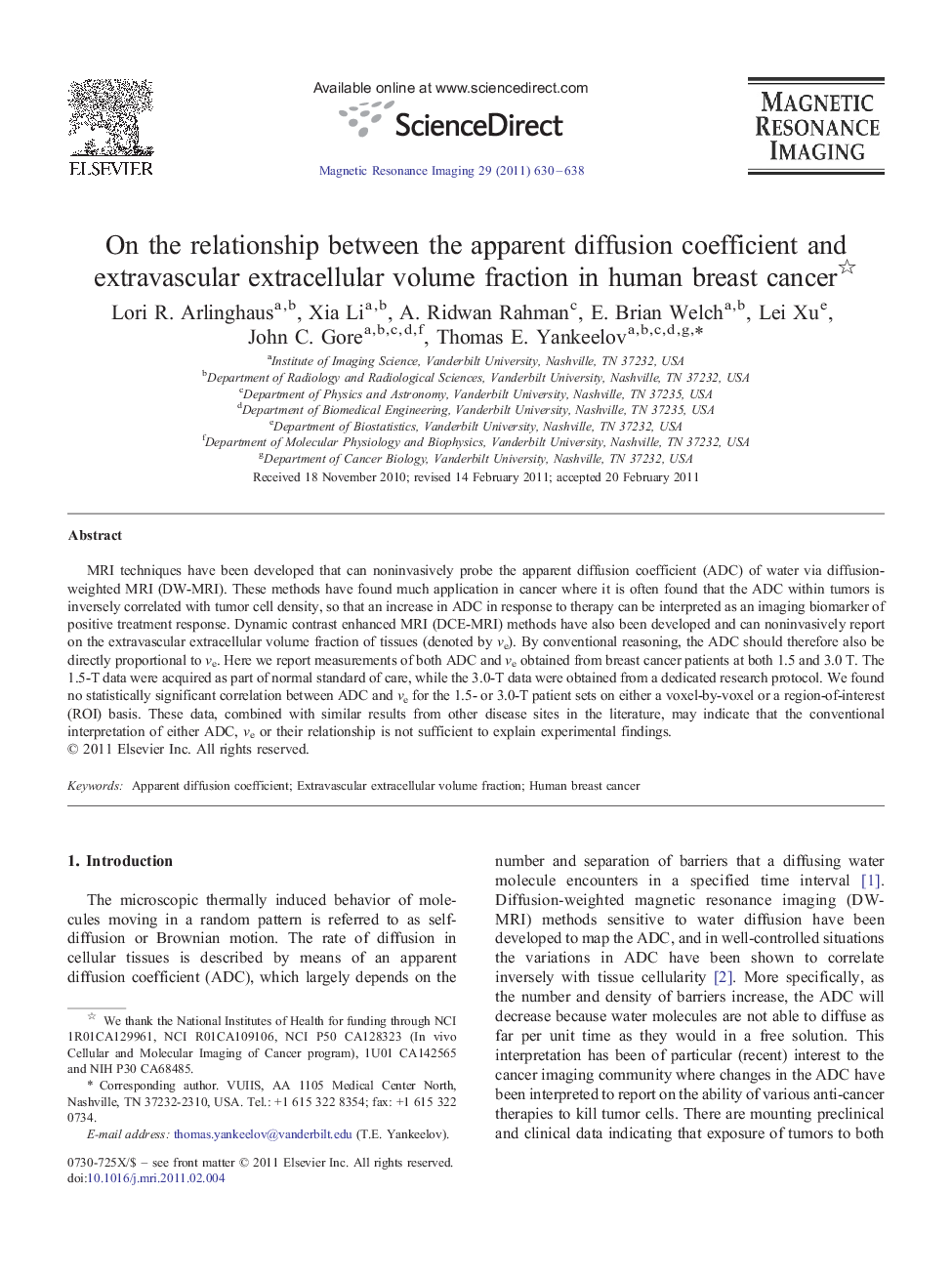| Article ID | Journal | Published Year | Pages | File Type |
|---|---|---|---|---|
| 1806879 | Magnetic Resonance Imaging | 2011 | 9 Pages |
Abstract
MRI techniques have been developed that can noninvasively probe the apparent diffusion coefficient (ADC) of water via diffusion-weighted MRI (DW-MRI). These methods have found much application in cancer where it is often found that the ADC within tumors is inversely correlated with tumor cell density, so that an increase in ADC in response to therapy can be interpreted as an imaging biomarker of positive treatment response. Dynamic contrast enhanced MRI (DCE-MRI) methods have also been developed and can noninvasively report on the extravascular extracellular volume fraction of tissues (denoted by ve). By conventional reasoning, the ADC should therefore also be directly proportional to ve. Here we report measurements of both ADC and ve obtained from breast cancer patients at both 1.5 and 3.0 T. The 1.5-T data were acquired as part of normal standard of care, while the 3.0-T data were obtained from a dedicated research protocol. We found no statistically significant correlation between ADC and ve for the 1.5- or 3.0-T patient sets on either a voxel-by-voxel or a region-of-interest (ROI) basis. These data, combined with similar results from other disease sites in the literature, may indicate that the conventional interpretation of either ADC, ve or their relationship is not sufficient to explain experimental findings.
Related Topics
Physical Sciences and Engineering
Physics and Astronomy
Condensed Matter Physics
Authors
Lori R. Arlinghaus, Xia Li, A. Ridwan Rahman, E. Brian Welch, Lei Xu, John C. Gore, Thomas E. Yankeelov,
